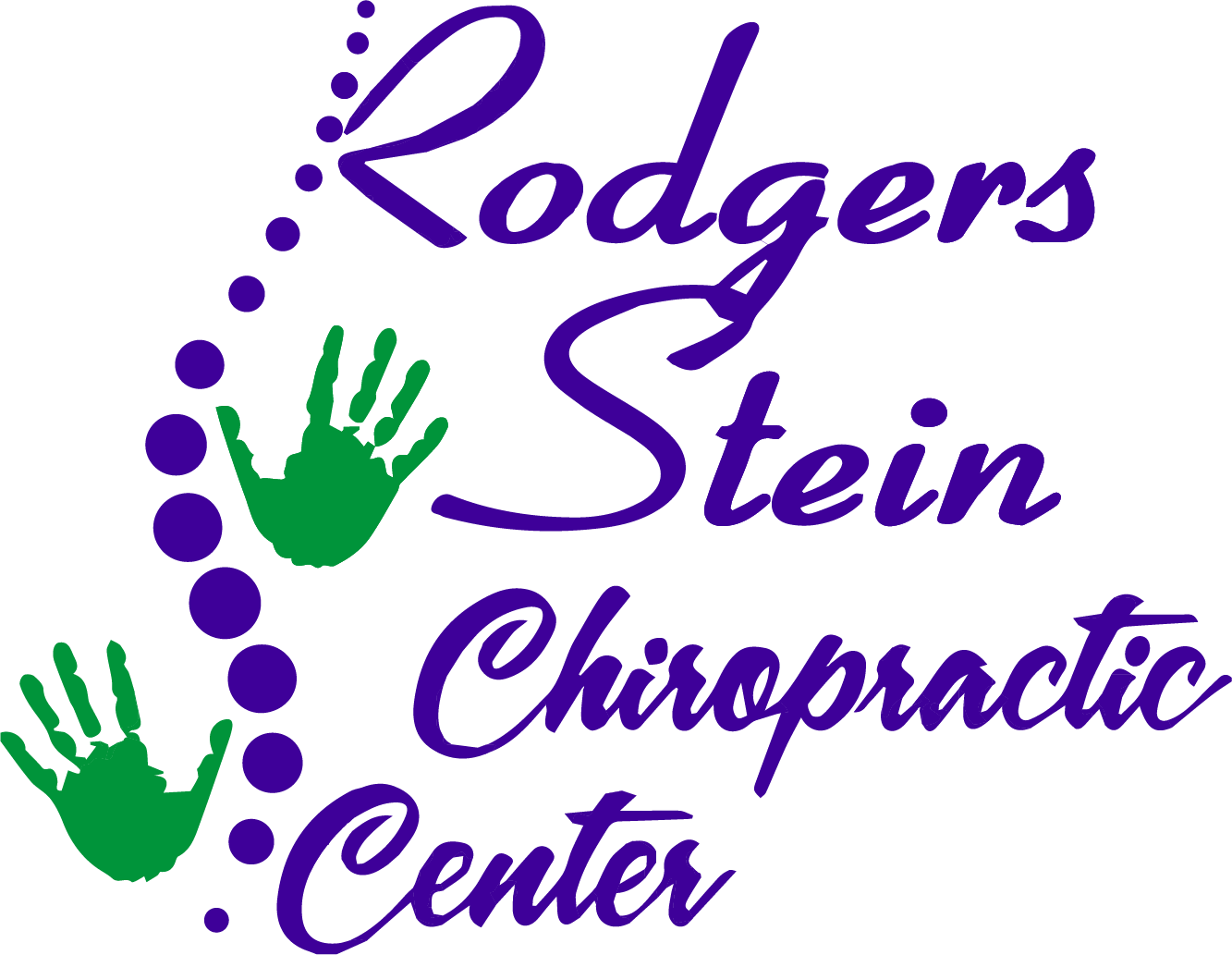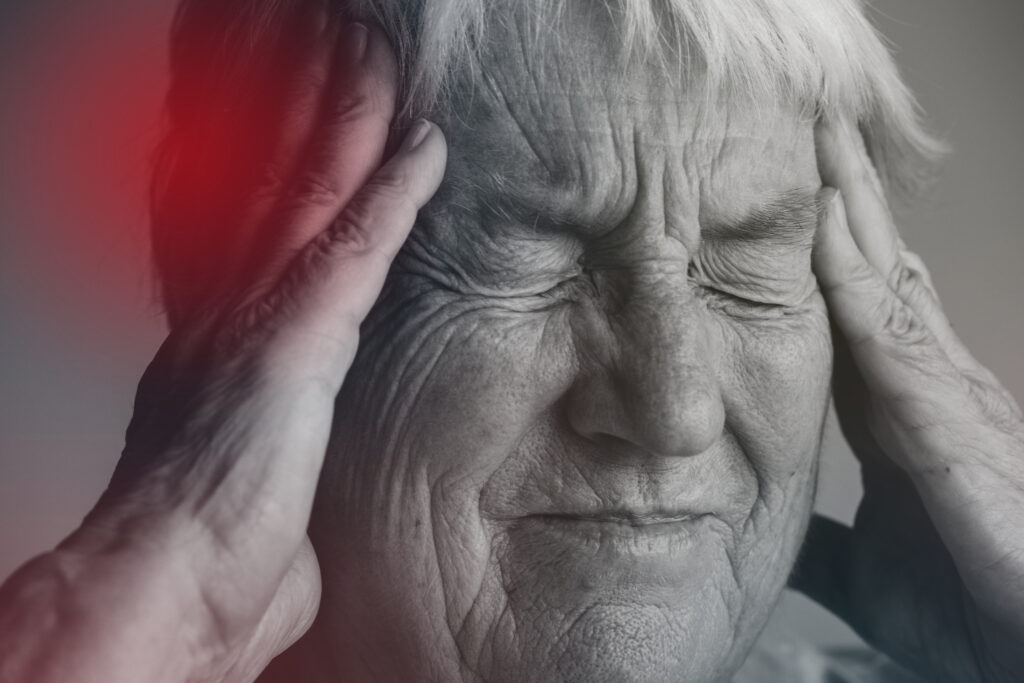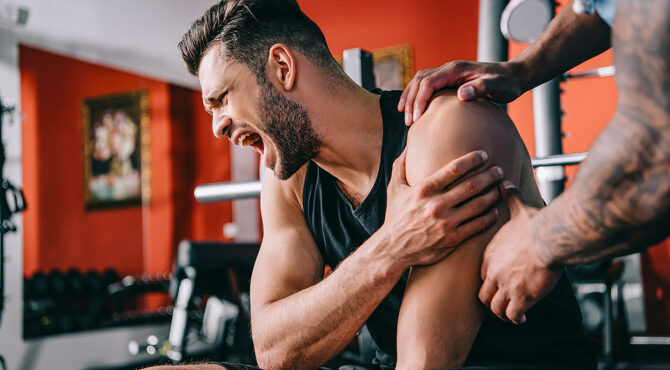As a local chiropractor, I understand that many of you may be experiencing lower back pain and are seeking effective ways to find relief. You might have heard about different treatment methods, but it's important to recognize that not every solution will work for everyone.
Chiropractic care focuses on the alignment of your spine and the overall health of your musculoskeletal system. Through targeted adjustments, we can help alleviate pain and improve your mobility. Additionally, I encourage incorporating specific exercises tailored to your needs, as well as making ergonomic adjustments in your workspace to support your back.
Moreover, don't underestimate the power of mindfulness techniques. Practices such as deep breathing and meditation can significantly enhance your recovery process by reducing stress and promoting relaxation.
Together, we can explore which methods resonate with your lifestyle and preferences, paving the way for you to experience meaningful improvements in your quality of life. Remember, effective relief is possible, and I'm here to guide you on your journey to better health.
Stretching and Flexibility Exercises
As a local chiropractor, I want to share the importance of stretching and flexibility exercises in managing lower back pain and enhancing your overall mobility. Many of my patients find that integrating these exercises into their daily routine can significantly improve their range of motion and alleviate stiffness in their lower back. Consistency is key; the more regularly you practice these stretches, the better the outcomes you'll experience.
I recommend starting with gentle stretches like the cat-cow pose or child's pose. These movements are excellent for loosening up your spine and relieving built-up tension. Another effective option is the seated forward bend, which stretches both your hamstrings and lower back at the same time. Not only do these stretches promote flexibility, but they also help calm your mind, which is particularly beneficial when you're dealing with any kind of pain.
Aim to hold each stretch for about 15 to 30 seconds and repeat them a few times. This practice can lead to noticeable improvements over time. It's important to focus on your breathing during these exercises; deep inhales as you stretch can enhance relaxation and overall effectiveness. Take your time; allow your body to gradually adjust to each movement.
In addition to static stretches, consider incorporating dynamic stretches such as leg swings or torso twists into your routine. These movements can help warm up your muscles and prepare them for more intense activities later in your day.
Always listen to your body. If you experience sharp pain or discomfort, it's essential to ease off and adjust your position. Remember, achieving flexibility is a gradual process that requires time and commitment.
Strengthening Core Muscles
As a chiropractor dedicated to helping you achieve a healthier and pain-free life, I want to emphasize the importance of strengthening your core muscles in managing lower back pain. Many people think of their core as just their abdominal muscles, but it actually encompasses all the muscles in your torso that support the spine. A strong core is crucial; it stabilizes your body, reduces strain on your lower back, and enhances your posture, which can significantly alleviate pain.
Let's start with some foundational exercises that can easily be integrated into your routine. One effective exercise is the plank. This move engages multiple core muscles and builds both endurance and strength. To perform a plank, lie face down and lift your body off the ground, balancing on your forearms and toes. Aim to hold this position for 20 to 30 seconds, gradually increasing the duration as your strength improves.
Another excellent exercise is the bridge. To do this, lie on your back with your knees bent and feet flat on the floor. Lift your hips toward the ceiling, hold for a few seconds, and then lower back down. This exercise effectively targets your glutes and lower back, contributing to overall core strength.
Don't overlook your obliques, the muscles located on the sides of your abdomen. Side planks are particularly beneficial for strengthening these muscles. To perform a side plank, lie on your side, propped up on one forearm, and lift your hips off the ground. Hold this position for 20 to 30 seconds on each side.
I recommend incorporating these exercises into your routine three to four times a week. It's essential to listen to your body; if any exercise causes discomfort, please ease off and consult with me or another healthcare professional.
Strengthening your core isn't just about alleviating pain; it's about enhancing your overall stability and functionality, which is a fundamental part of natural healing and maintaining a healthy spine. Remember, I'm here to support you on your journey to better health!
Proper Ergonomics at Work
As a local chiropractor, I want to emphasize the importance of proper ergonomics to prevent lower back pain, especially for those of you who may not be familiar with chiropractic care or natural healing practices.
It's crucial to pay attention to your desk setup, the chair you use, and your posture while working.
Selecting the right chair that offers adequate support and ensuring your desk is at the appropriate height can significantly impact your spinal health.
By making these simple adjustments, you not only support your back but also boost your overall productivity.
Remember, a comfortable workspace is key to maintaining your well-being and preventing discomfort in the long run.
Taking care of your body starts with creating an environment that promotes good posture and spinal alignment.
Desk Setup Essentials
As a chiropractor, I often see patients who experience discomfort from long hours spent at their desks.
It's crucial to prioritize proper ergonomics in your workspace to significantly reduce the risk of lower back pain and other musculoskeletal issues. An organized and well-thought-out desk setup can greatly contribute to maintaining good posture and minimizing discomfort.
Here are some essential tips to consider for your desk setup:
- Monitor Height: It's important to position your monitor at eye level. This will help you avoid unnecessary strain on your neck and back. Ideally, the top of your screen should be aligned with or just below your eye level.
- Keyboard and Mouse Placement: Keeping your keyboard and mouse within easy reach is vital. Your elbows should remain at a 90-degree angle to minimize shoulder strain while you work. This simple adjustment can make a big difference in your overall comfort.
- Desk Height: Make sure your desk is set at a height that allows your forearms to be parallel to the ground when you're typing. If your desk is too high or too low, consider adjusting your chair height accordingly to find the right balance.
- Foot Position: Your feet should rest flat on the floor or on a footrest. This position promotes proper alignment of your lower back and can help prevent discomfort over time.
By implementing these ergonomic tips, you can create a workspace that supports your body's natural alignment and enhances your overall well-being.
Chair Selection Tips
As a local chiropractor, I want to emphasize the importance of selecting the right chair for your workspace to support your overall health and well-being. Many people underestimate how crucial this choice is for maintaining proper ergonomics, which can significantly impact spinal health and comfort.
An ergonomic chair is designed to support your lower back, helping to prevent pain and discomfort that can arise from prolonged sitting.
When you're in the market for a new chair, prioritize options that allow for adjustable height. This feature is essential for ensuring your feet can rest flat on the floor while your knees are at approximately a 90-degree angle. Proper alignment in your sitting position is key to reducing strain on your spine.
Look for chairs that include lumbar support, which should curve inward to align with the natural curve of your spine. This supportive feature can significantly reduce lower back strain and promote healthy posture.
Additionally, consider the seat depth—it's important that the chair allows you to sit comfortably without pressing against the back of your knees.
Don't overlook the role of armrests in your chair selection. Adjustable armrests can help alleviate shoulder strain and provide a comfortable resting place for your arms while you type or work.
Before making a purchase, I encourage you to test the chair. Sit in it for a few minutes to assess its comfort and support.
Posture Correction Techniques
As a local chiropractor, I want to emphasize the importance of maintaining proper posture while you work. Good posture isn't just about looking professional; it's crucial for preventing lower back pain and enhancing your overall well-being.
By making some simple adjustments to your workspace and daily habits, you can significantly alleviate discomfort and boost your productivity. Here are some effective posture correction techniques that I encourage you to incorporate into your routine:
- Adjust your chair height: Ensure that your feet are flat on the floor and your knees are aligned with your hips. This alignment is key to supporting your spine's natural curvature.
- Utilize lumbar support: A cushion or a chair designed with built-in lumbar support can help maintain the natural curve of your spine, reducing strain on your lower back.
- Position your monitor correctly: Your computer screen should be at eye level and approximately an arm's length away. This positioning helps prevent neck strain and promotes a more comfortable working posture.
- Take regular breaks: It's important to stand, stretch, or take a brief walk every 30 minutes. These breaks will help relieve tension in your muscles and improve circulation, which is essential for maintaining good posture throughout the day.
By incorporating these techniques, you can create a healthier work environment that supports your spine and overall health.
Heat and Cold Therapy
As a local chiropractor dedicated to helping you understand the benefits of natural healing, I want to share the effectiveness of heat and cold therapy in relieving lower back pain. Many of my patients find significant relief by alternating between these two methods, as they each serve unique purposes and can greatly enhance your comfort.
When you apply heat to the affected area, it increases blood flow, which promotes healing and helps to relax tight muscles. I often recommend using a heating pad, a warm towel, or even enjoying a warm bath. Just remember, moderation is key—applying heat for about 15 to 20 minutes is usually sufficient to reap the benefits without overdoing it.
Conversely, cold therapy is invaluable for reducing inflammation and numbing sharp pain. For this, ice packs or a bag of frozen vegetables wrapped in a cloth can be very effective. Applying cold for 15 to 20 minutes can help decrease swelling and provide immediate relief, especially right after an injury or during flare-ups of pain.
I encourage my patients to consider alternating between heat and cold therapy. Start with cold to tackle inflammation, and then switch to heat to help relax your muscles. It's important to listen to your body and find what works best for you.
If you notice your pain worsening or not improving, please don't hesitate to reach out for personalized advice. By incorporating heat and cold therapy into your routine, you can make a significant difference in managing your lower back pain effectively.
Over-the-Counter Pain Relievers
As a local chiropractor, I want to help you understand how to manage lower back pain effectively. While over-the-counter pain relievers may seem like a quick fix, it's important to consider a more holistic approach to your health.
These medications come in various forms, each with specific dosage and safety guidelines. However, relying solely on them can mask the underlying issues causing your discomfort.
In my practice, I emphasize the importance of understanding your body and what truly works for you. Chiropractic care focuses on addressing the root causes of pain, promoting natural healing, and enhancing your overall well-being.
By exploring options such as spinal adjustments, therapeutic exercises, and lifestyle changes, we can create a comprehensive plan tailored to your needs.
Types of Pain Relievers
As a local chiropractor, I often see patients struggling with lower back pain, and one of the first things I recommend is exploring over-the-counter pain relievers. These medications can offer a quick way to manage discomfort and help you return to your daily activities.
Here are some common types of over-the-counter pain relievers that you might consider:
- Acetaminophen: This is commonly suggested for mild to moderate pain. It's easier on the stomach compared to some other options, but keep in mind that it doesn't address inflammation, which may be a contributing factor to your pain.
- Non-Steroidal Anti-Inflammatory Drugs (NSAIDs): Medications such as ibuprofen and naproxen are effective for relieving both pain and inflammation. These are popular choices for back pain and can be particularly beneficial if inflammation is present.
- Topical Analgesics: Creams or gels that contain ingredients like menthol or capsaicin can provide targeted relief to the affected area with generally fewer side effects. These can be a great adjunct to your chiropractic treatment.
- Combination Medications: Some over-the-counter products combine acetaminophen with NSAIDs to enhance pain relief. Just be cautious and check the labels to avoid taking too much of any one ingredient.
When considering these options, it's important to think about your unique health needs. Each type of pain reliever has its pros and cons, so understanding these can empower you to make informed decisions.
Dosage and Safety Guidelines
As your local chiropractor, I want to help you understand the importance of proper dosage and safety when it comes to managing lower back pain, especially if you're considering over-the-counter pain relievers like ibuprofen and acetaminophen.
While these medications can provide temporary relief, it's crucial to use them wisely.
For ibuprofen, a common recommendation for adults is to take 200-400 mg every 4 to 6 hours, but be careful not to exceed 1,200 mg in a single day unless your healthcare provider says otherwise.
On the other hand, acetaminophen is usually taken at doses of 500-1,000 mg every 4-6 hours, with a maximum daily dosage of 3,000 mg. Always check the label for specific instructions, as they can vary.
It's important to be aware of the potential side effects associated with these medications. Ibuprofen can irritate the stomach and, with overuse, might lead to ulcers or bleeding.
Acetaminophen, if taken in high doses, can harm your liver.
If you're pregnant, have existing health issues, or are on other medications, I highly recommend consulting with your doctor before starting any pain reliever.
In chiropractic care, we often emphasize starting with the lowest effective dose and paying close attention to how your body responds.
If your pain continues or worsens, please seek professional medical advice.
As a chiropractor, I'm here to explore other treatment options with you that focus on natural healing and holistic approaches to pain management.
Let's work together to find the best solution for your lower back pain!
Physical Therapy Options
As a local chiropractor, I want to share how chiropractic care can be an effective solution for alleviating lower back pain. If you're experiencing discomfort, a personalized chiropractic program can help you regain strength, flexibility, and enhance your overall quality of life.
Here are some key aspects of chiropractic care that you might find beneficial:
- Assessment and Diagnosis: During your initial visit, I'll evaluate your condition, pinpointing the source of your pain and formulating a tailored treatment plan just for you.
- Chiropractic Adjustments: I'll perform specific adjustments to align your spine and improve your body's function. This can lead to enhanced support and stability in your back and core muscles.
- Soft Tissue Techniques: I may utilize methods such as myofascial release to alleviate tension in your muscles and improve your overall mobility.
- Education and Lifestyle Guidance: I'll provide you with insights on proper body mechanics and posture, empowering you to avoid future injuries and promote long-term health.
By engaging in chiropractic care, you actively participate in your healing journey. Regular adjustments not only address your current pain but also equip you with the knowledge and skills to prevent it from recurring.
Additionally, I may incorporate natural healing modalities, such as heat or cold therapy, to enhance your treatment experience.
Ultimately, chiropractic care offers a comprehensive approach to managing lower back pain, enabling you to take charge of your well-being. I encourage you to reach out and schedule a consultation; taking this step could lead you toward lasting relief and a more vibrant, active lifestyle.
Alternative Treatments
As a local chiropractor, I want to share valuable information about alternative treatments for lower back pain that can complement the traditional care you may already be receiving. Many people aren't fully aware of the benefits of chiropractic care and other natural healing methods, so let's explore some effective options together.
Chiropractic care is centered around the alignment of your spine, which can have a profound impact on your overall health and well-being. When your spine is misaligned, it can put pressure on nerves and lead to discomfort and pain. During your visit, I'll assess your condition and use gentle spinal adjustments, along with soft tissue techniques, to help relieve this pressure and restore proper function.
Many patients experience significant relief after just a few sessions, and we can work together to create a personalized treatment plan that addresses your specific needs.
In addition to chiropractic adjustments, I often recommend complementary therapies such as acupuncture and massage therapy. Acupuncture involves inserting fine needles into specific points on your body to stimulate healing. Many of my patients have found it to be beneficial for reducing pain and improving mobility.
If you're interested, I can help you find a licensed acupuncturist with experience in treating lower back pain.
Massage therapy is another excellent option that can help alleviate muscle tension, improve circulation, and promote relaxation. A skilled massage therapist can target the areas around your lower back, releasing tightness and enhancing your comfort.
Regular massage sessions may contribute to a better quality of life and lasting relief from discomfort.
Furthermore, incorporating herbal remedies and dietary supplements, such as turmeric or omega-3 fatty acids, into your daily routine can also support your pain management strategy. However, it's important to always consult with a healthcare professional before starting any new treatment to ensure it's safe and appropriate for your individual situation.
Mindfulness and Relaxation Techniques
As a local chiropractor dedicated to helping you manage your lower back pain, I want to share the importance of incorporating mindfulness and relaxation techniques alongside your physical treatments. These practices can significantly enhance your healing journey by helping you connect with your body, reduce stress, and promote overall well-being.
By learning to focus on the present moment, you can alleviate tension in your back and improve your pain management.
Here are some effective mindfulness and relaxation techniques that I recommend you try:
- Deep Breathing Exercises: Take a moment to focus on your breath. Inhale deeply through your nose, allowing your belly to expand, and then exhale slowly through your mouth. This simple practice can calm your mind and reduce muscle tension, which is essential for those dealing with back pain.
- Meditation: Set aside a few minutes each day for quiet reflection. Guided meditations can be particularly beneficial, as they help you visualize pain relief and foster a sense of inner peace that complements your chiropractic care.
- Progressive Muscle Relaxation: This technique involves tensing and then relaxing each muscle group in your body, starting from your toes and working your way up to your head. It's an effective way to release physical tension that could be contributing to your pain.
- Yoga or Tai Chi: These gentle forms of exercise promote flexibility and strength while encouraging mindfulness. Practicing yoga or Tai Chi can help you become more aware of your body and its needs, making it easier to manage and prevent pain.
Incorporating these techniques into your routine can work hand in hand with chiropractic adjustments to enhance your overall health and recovery.
Together, we can create a holistic approach to better manage your lower back pain.
Conclusion
As a local chiropractor, I want to share some valuable insights on how you can find relief from lower back pain through natural methods. Incorporating simple yet effective solutions into your daily routine can significantly improve your comfort and overall well-being.
Firstly, focusing on stretching and strengthening your core muscles is essential. These practices not only alleviate discomfort but also promote better posture, which is crucial for maintaining a healthy spine.
Don't underestimate the power of heat and cold therapy in managing pain. Applying heat can help relax tight muscles, while cold therapy can reduce inflammation and numb sharp pain. Over-the-counter pain relievers can also provide temporary relief, but I encourage you to explore more holistic options as well.
As your chiropractor, I recommend considering professional treatments like chiropractic adjustments. These can realign your spine, improve mobility, and address the root causes of your pain.
Additionally, incorporating mindfulness techniques, such as meditation and deep breathing exercises, can help you manage pain and enhance your overall mental health.
By taking these steps and integrating them into your lifestyle, you will be well on your way to feeling better and enjoying a pain-free life! If you have any questions or need further guidance, feel free to reach out. Your journey to wellness starts here!



